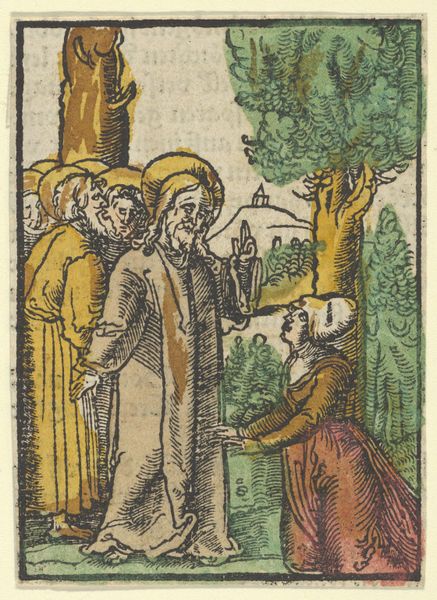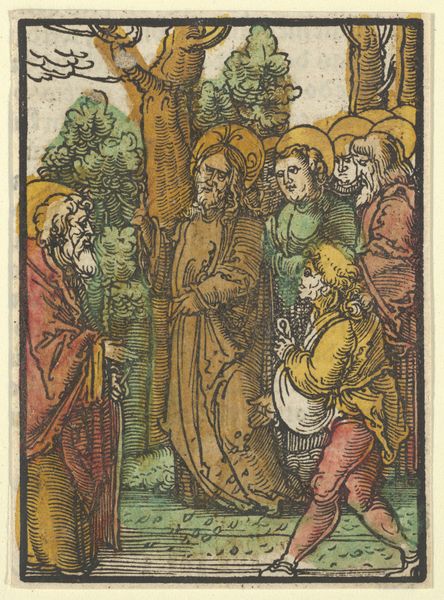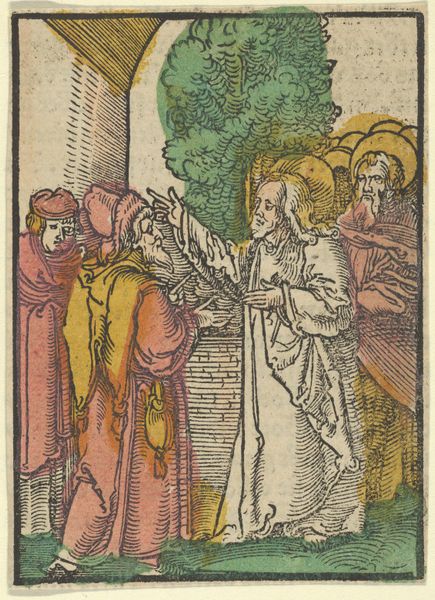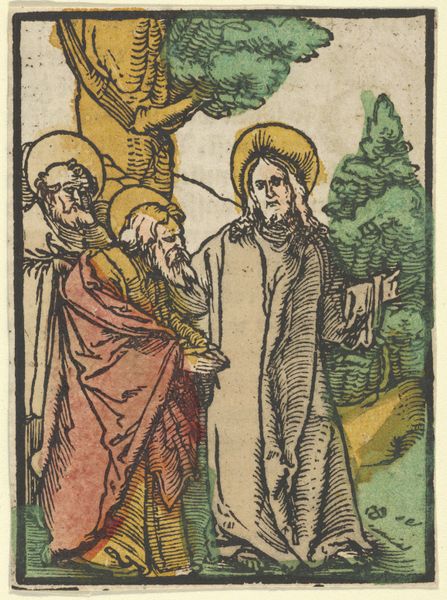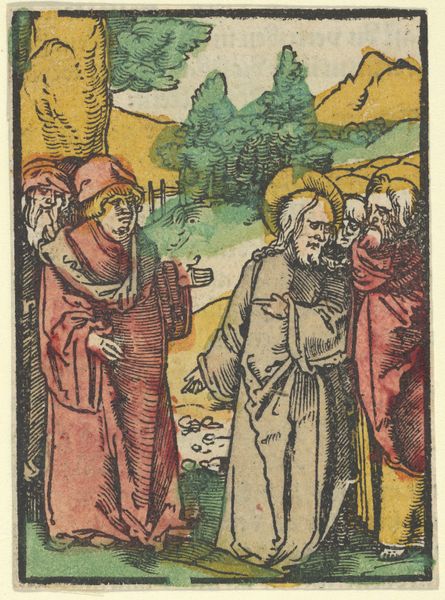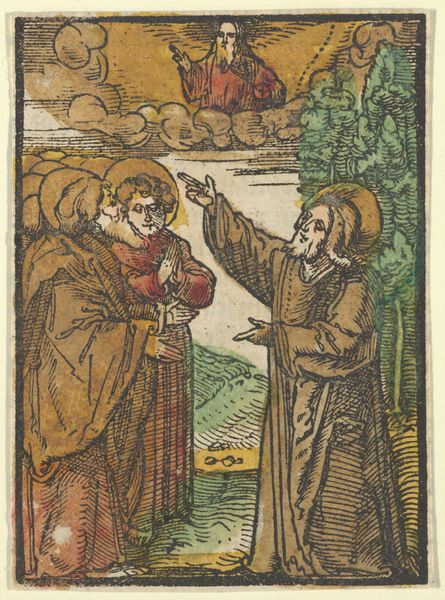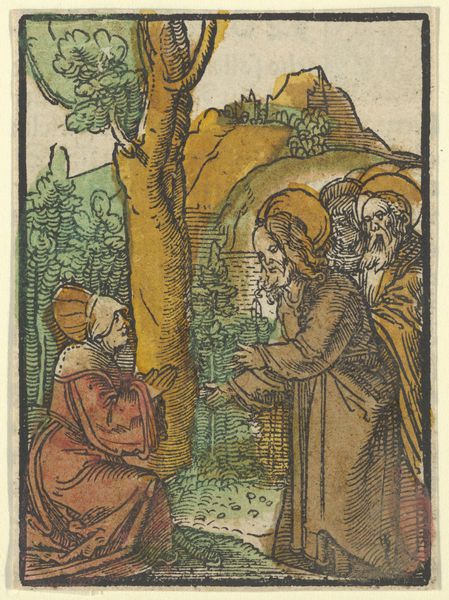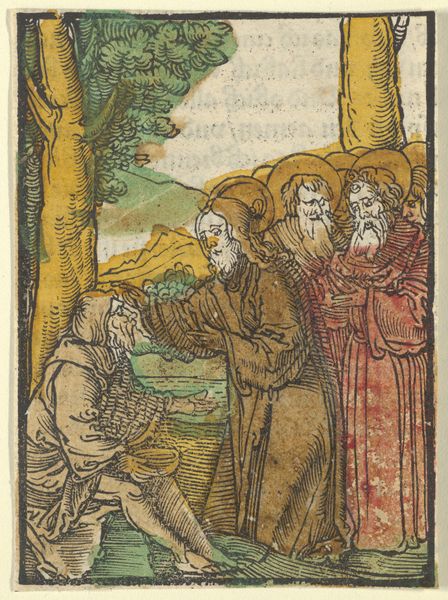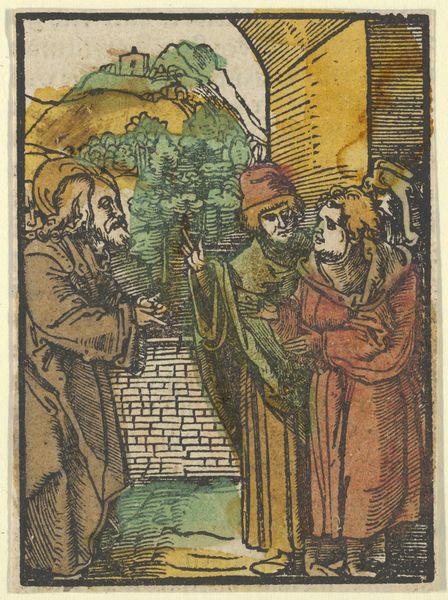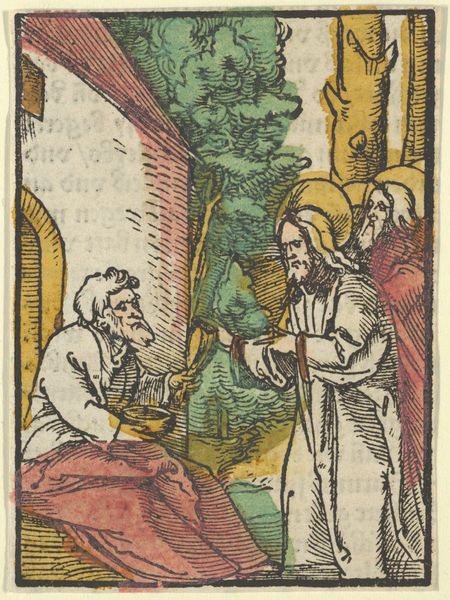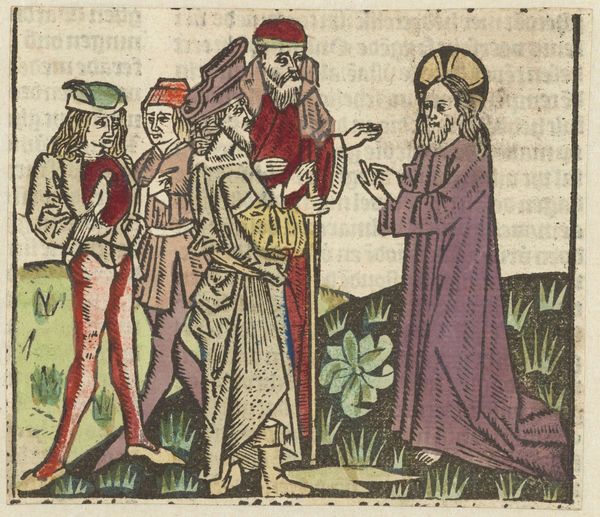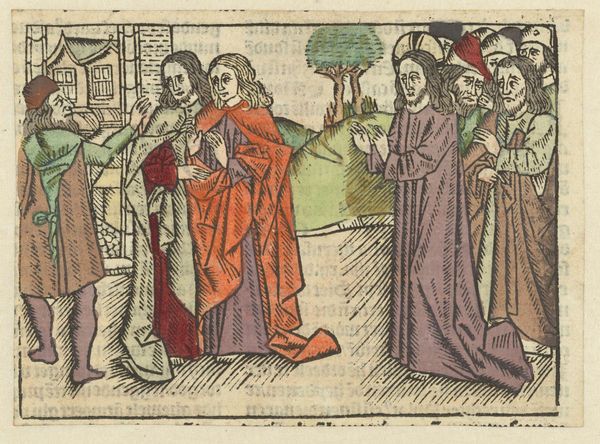
Christ Healing the Deaf-Mute, from Das Plenarium 1517
0:00
0:00
drawing, print, woodcut
#
drawing
# print
#
figuration
#
coloured pencil
#
woodcut
#
history-painting
#
northern-renaissance
#
christ
Dimensions: Sheet: 3 11/16 × 2 11/16 in. (9.4 × 6.8 cm)
Copyright: Public Domain
Curator: Before us we have Hans Schäufelein’s "Christ Healing the Deaf-Mute," a colored woodcut created around 1517. It’s currently part of the Metropolitan Museum's collection. Editor: My immediate reaction is drawn to the chromatic tension, specifically, the contrast between the subdued palette and the dynamism of the line work—it evokes both the earthly and ethereal realms. Curator: Absolutely. The figuration and gestures are central here. Notice the symbolic hand positions-- Christ’s touch, meant to convey divine intervention and the release of the deaf-mute from his condition. Healing as liberation is a common trope but Schäufelein executes it powerfully. Editor: Indeed, there's an intriguing visual interplay between foreground and background. The limited perspective almost flattens the scene, emphasizing the emotional interaction between Christ and the afflicted. The lines of the woodcut create both form and emotional tension in their varying weights. Curator: The faces, too, offer us something. In this period, a representation of affliction was almost its own visual symbol. A disturbed visage showed internal, psychological turmoil made manifest in the exterior. So much cultural context is coded into that face. Editor: Precisely. And the arrangement—the balance of the figures—contributes to the overall sense of structured chaos. While the central figures dominate, the crowd of onlookers create an important background; this balance speaks to Renaissance artistic ideals even amidst its apparent expressive simplicity. Curator: Right. Schäufelein was working at a pivotal time, wrestling with artistic tradition and the nascent humanist ideals. His style became part of the historical language used in depictions of the life of Christ. Editor: Seeing it through this lens makes me admire the artist’s command over materials to deliver an efficient yet poignant representation. Thank you for enlightening me. Curator: And you’ve added layers of observations for our audience to notice in Schäufelein’s composition. Thank you!
Comments
No comments
Be the first to comment and join the conversation on the ultimate creative platform.

